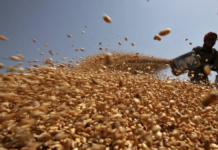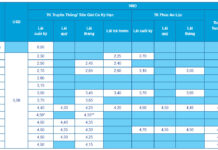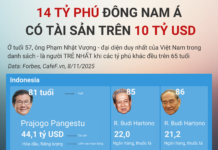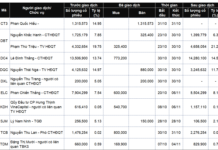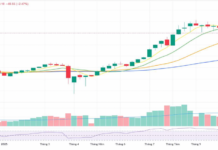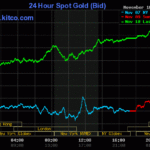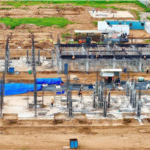According to the latest data from the State Bank of Vietnam, as of August 31, the total outstanding real estate credit across the system reached approximately VND 4.1 quadrillion. Of this, credit for real estate business activities accounted for VND 1,823 trillion. Specifically, the outstanding debt for real estate business activities amounted to VND 1,820 trillion, indicating that bank capital is returning to support the market after a sluggish period in late 2023 and early 2024.
In terms of structure, credit for urban area and housing development projects holds the largest share at nearly VND 615 trillion. This is followed by outstanding debt for land use rights purchases, industrial and export processing zone projects, office rental projects, and other segments.
The State Bank of Vietnam assesses this growth rate as consistent with market dynamics, as many projects are resuming, and investment and construction progress is improving, thereby increasing credit demand.

Real estate credit surges significantly.
However, in the Q3 real estate market report, the Ministry of Construction noted that while real estate credit is improving compared to late 2024, tight risk control is essential to ensure the market’s sustainable development.
The Ministry of Construction recommends that the State Bank of Vietnam implement flexible monetary policies, prioritizing capital for social housing, worker housing, and commercial housing priced appropriately for the population’s income levels.
At the recent Vietnam Investment Forum 2026, economist Dinh The Hien stated that credit growth over nine months reached approximately 13%, but real estate market capital growth was significantly higher, at nearly 20%, with a sharp increase in August and September.
“In normal periods, moderate growth is sufficient to create real estate waves, but now there are no waves. The issue is that strong real estate credit is not generating the desired liquidity or waves,” said Mr. Hien.
According to the expert, banks typically lend up to 70% of the asset value, with investors or buyers providing the remaining 30% in equity. However, some banks are now offering loans for down payments, indicating excessive speculative credit. When prices rise, speculators face difficulties, and credit becomes concentrated.
“Speculative capital will certainly be controlled. In the short term, projects catering to speculative investors will face challenges. Conversely, well-positioned projects with strong potential will attract capital,” Mr. Hien emphasized.
Recently, the State Bank of Vietnam’s Branch 2 (SBV Branch 2) issued a warning to commercial banks in Ho Chi Minh City and Dong Nai Province regarding lending risks.
The agency has received numerous complaints from citizens about commercial banks providing credit for down payments on real estate purchases based on agreements with consulting and brokerage firms.
Based on these complaints and information from authorities, SBV Branch 2 identifies several risks associated with such lending practices, particularly legal risks, disputes, and complaints.
In addition to legal risks, regulators warn of potential bad debt and financial losses. Loan disbursements for down payments to brokers or consultants are entirely dependent on project outcomes. If projects stall, are suspended, or fail to meet continuation criteria, banks may face capital losses.
Gold Ring and Gold Bar Prices Surge by Up to 2 Million VND per Tael on November 11th
At the close of today’s trading session, Bao Tin Minh Chau is offering wedding ring gold at 152.3 million VND per tael, while gold bars have reached a selling price of 152 million VND per tael.
Vietnam’s Record-Breaking $2.06 Billion, 800-Hectare Megacity Unveiled Adjacent to International Airport and Seaport
Nestled along one of the world’s most breathtaking coastal bays, this premier metropolitan city in Vietnam redefines urban elegance and natural splendor. Its strategic location offers unparalleled views, blending modern sophistication with the serene beauty of the sea, making it a global destination like no other.
“Vietnam Feeds the World: No Exaggeration”
Vietnam’s agricultural products have made their mark on the global stage, reaching over 190 countries and territories worldwide, a remarkable feat considering there are only 195 nations in total. This impressive distribution network showcases the country’s agricultural prowess and its ability to cater to diverse international markets.




